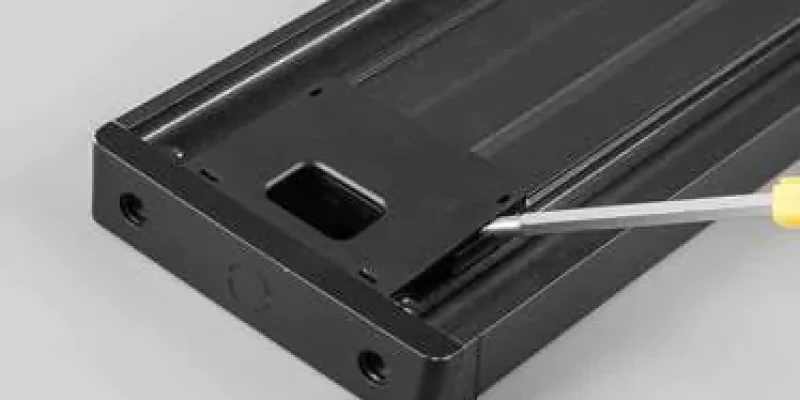Вибираючи розетки для силових доріжок, розуміння матеріалів, з яких вони виготовлені, може дати уявлення про їхню безпеку, довговічність і функціональність. Ці матеріали ретельно відбираються для підвищення продуктивності та надійності систем силових доріжок, що робить їх придатними для різних застосувань. Розглянемо основні матеріали, що використовуються в розетках силових треків, та причини їхнього вибору.
Алюмінієвий сплав: Легкий і міцний
Мета: Основний корпус багатьох розеток виготовлений з алюмінієвого сплаву. Цей матеріал обрано за поєднання міцності та легкості.
Вигоди: Алюмінієвий сплав має високу стійкість до корозії, що робить його ідеальним для довготривалих установок. Його чудова теплопровідність допомагає розсіювати тепло, що утворюється під час роботи, забезпечуючи прохолоду та безпеку силової доріжки. Крім того, легкість алюмінію полегшує його обробку та монтаж, зменшуючи загальні зусилля та час, необхідні для встановлення.
Анодоване покриття: Посилений захист
Мета: На алюмінієвий сплав наноситься анодоване покриття для подальшого покращення властивостей поверхні.
Вигоди: Цей електрохімічний процес підвищує корозійну стійкість і зносостійкість алюмінію. Анодування не тільки робить поверхню більш стійкою до подряпин і впливу навколишнього середовища, але й надає їй чистого і полірованого вигляду, сприяючи естетичному вигляду установки.
Фосфорна мідь: Надійна провідність
Мета: Фосфориста мідь використовується для струмопровідних компонентів всередині розеток, що є критично важливим для забезпечення надійного електричного з'єднання.
Вигоди: Цей матеріал має чудову електропровідність і високу корозійну стійкість. Використовуючи фосфорну мідь, виробники гарантують, що електричні з'єднання в розетках силової шини залишаються стабільними та ефективними, знижуючи ризик перегріву або електричної несправності.
Вогнетривкі матеріали: Безпека при високих температурах
Мета: Деякі частини розеток силових шин виготовлені з вогнетривких матеріалів, які можуть витримувати екстремальні температури без руйнування.
Вигоди: Ці матеріали відіграють життєво важливу роль у підвищенні безпеки системи контактної мережі. Вони запобігають ураженню електричним струмом і зменшують пожежну небезпеку, зберігаючи свою структурну цілісність навіть в умовах високої температури. Це робить їх особливо корисними в середовищах, де очікуються високі енергетичні навантаження.
Ізоляційні пластики: Основна ізоляція
Мета: Високоякісні ізоляційні пластмаси використовуються в корпусах розеток та інших компонентах, щоб запобігти прямому електричному контакту зі струмопровідними частинами.
Вигоди: Використання ізоляційних пластиків гарантує захист користувачів від ураження електричним струмом. Ці матеріали забезпечують необхідну ізоляцію для утримання електричного струму в межах безпечних шляхів, гарантуючи безпечну експлуатацію шинопроводу в різних середовищах, включаючи житлові та комерційні приміщення.
Висновок
Ретельний вибір матеріалів, таких як алюмінієвий сплав, анодоване покриття, фосфорна мідь, вогнетривкі матеріали та ізоляційні пластмаси, при виготовленні розеток силових шин підкреслює прихильність до безпеки, довговічності та ефективності. Ці матеріали працюють в гармонії, забезпечуючи надійне електричне з'єднання, мінімізуючи ризики, пов'язані з перегрівом та електричними несправностями.
Розуміння цих матеріалів допоможе вам оцінити міцність і надійність розеток, що робить їх розумною інвестицією як для житлових, так і для комерційних об'єктів. Удосконалена конструкція гарантує, що вони не тільки відповідають, але й перевершують стандарти безпеки, пропонуючи душевний спокій і надійну роботу.
Відкрийте для себе найкращі розетки живлення для треків для ваших потреб
Тепер, коли ви знаєте про матеріали та їхні переваги, ви можете прийняти обґрунтоване рішення при виборі розеток для силових шинопроводів для вашого приміщення. Ознайомтеся з нашим асортиментом високоякісних шинопроводів, розроблених для задоволення ваших унікальних потреб і підвищення безпеки та функціональності ваших електроустановок.
Розглядаючи ці матеріали та чітко і зрозуміло описуючи їхні конкретні переваги, цей блог має відповісти на поширені запити, пов'язані з будівництвом розеток для силових колій, оптимізувавши їх для пошукових систем.


